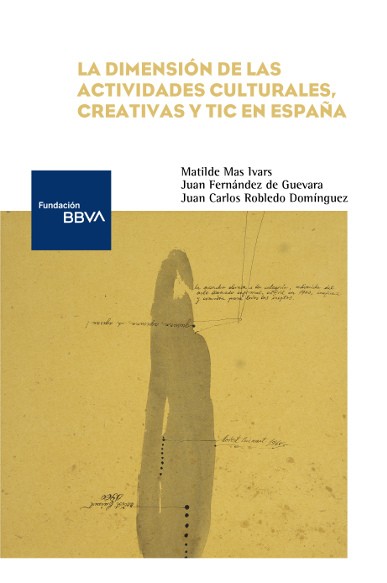
PublicationMonographs
La dimensión de las actividades culturales, creativas y TIC en España
Evolución temporal y comparación internacional
Social Sciences
Numerous studies published in the last ten years have underscored the importance of the cultural and creative industries and their linkage with the technological revolution associated with ICTs. In parallel, certain measures have been taken (by UNESCO, the OECD, the European Commission, the Spanish Ministry of Culture and Sports, etc.) to demarcate the activities that should come within their scope, and the measurement issues they raise. The problem is that the boundaries of such activities are only loosely drawn, since they cover widely disparate fields ranging from works of art to telecommunications and, by some definitions, software.
The goal of this book is to promote a better understanding of these industries, classifying them and measuring them from a three-way perspective: production, employment and investment. With this in mind, the authors propose a taxonomy of cultural, creative and ICT activities (ACCTs for their initials in Spanish) that allows to calculate their size in terms of value added and employment. They also take an in-depth look at the penetration of cultural, creative and ICT occupations (Spanish initials OCCTs), both within ACCTs and in the rest of the economy, and the rate of investment in intangible assets linked to these activities. The publication is accompanied by a database with key information on the sector, facilitating comparison of the Spanish case with that of major European Union countries, the United States and certain Asian countries.
The global center of gravity in ACCTs is shifting towards Asia, although the United States retains its leadership on the strength of its greater weight in value added and investment, and its higher productivity. Europe, meantime, is gradually losing ground to Asian countries, who make up for their lower productivity with the rapid advance of these activities as a share of value added and employment. The Spanish economy, finally, is seeing a higher proportion of workers moving into OCCTs and more intangible capital in ACCTs. Although these activities are expanding faster than in neighbor countries, Spain still lags behind.
The book will find interested readers not only among experts in the cultural field, but also among researchers, economists and the wider public.
The goal of this book is to promote a better understanding of these industries, classifying them and measuring them from a three-way perspective: production, employment and investment. With this in mind, the authors propose a taxonomy of cultural, creative and ICT activities (ACCTs for their initials in Spanish) that allows to calculate their size in terms of value added and employment. They also take an in-depth look at the penetration of cultural, creative and ICT occupations (Spanish initials OCCTs), both within ACCTs and in the rest of the economy, and the rate of investment in intangible assets linked to these activities. The publication is accompanied by a database with key information on the sector, facilitating comparison of the Spanish case with that of major European Union countries, the United States and certain Asian countries.
The global center of gravity in ACCTs is shifting towards Asia, although the United States retains its leadership on the strength of its greater weight in value added and investment, and its higher productivity. Europe, meantime, is gradually losing ground to Asian countries, who make up for their lower productivity with the rapid advance of these activities as a share of value added and employment. The Spanish economy, finally, is seeing a higher proportion of workers moving into OCCTs and more intangible capital in ACCTs. Although these activities are expanding faster than in neighbor countries, Spain still lags behind.
The book will find interested readers not only among experts in the cultural field, but also among researchers, economists and the wider public.
